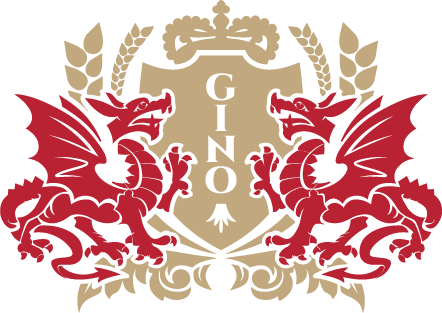The history of the Orlové Manor-House is linked with the history of the Považský hrad Castleand other aristocratic mansions in Považské Podhradie – all this represents the continuity of the Balassa settlements in the Považie Region. The owner of the Castle, Ondrej Balassa, left the mansion to his sons Zigmund and Imrich after his death. The interests and opinions of both brothers were very different. That is why they had frequent long-lasting disputes between them, which resulted in the division of the mansion into two parts in 1559, but the Považský hrad Castle remained in the possession of both the brothers. The Považský hrad Castle was uncomfortable for life, so Zigmund III. Balassa had built a “Curia Sigmond Haza“ in one of his inherited property of the Považská Bystrica Mansion, on a slight slope, above the little Orlové settlement, at the turn of the 16th and 17th century. The Curia was later rebuilt to the „castellum Zigmonháza“ manor-house. Its superstructure and extension created a new noble residence of the Balassas.
MORE ABOUT OUR HISTORY

Zigmund Balassa had 6 children – Ondrej, Ladislav, František, Ján, Šimon and Eufrozína. None of them were interested in managing and restoring the Manor-House. The reason for this was the very complicated relationships in the family caused by the frequent disagreements between Zigmund and Imrich Balassa. Zigmund Balassa was known for his violent temperament and often during his life he got into conflict with his brother Imrich, bringing a lot of unrest to the family. In 1605, he even had imprisoned his brother Imrich and the aunt Zofia Mérey under the guise in the Bystrica Castle. And that was also one of the reasons why Imrich Balassa did not support his nephew Ondrej, who eventually planned the reconstruction of the Manor-House.
At last, Ondrej’s son Pavol II. Balassa is credited with rebuilding the Castle. In the first third of the 18th century, the Orlové Manor-House, as the seat of the Považská Bystrica branch of the Balassa family, was significantly modified to a Baroque building and was enlarged.
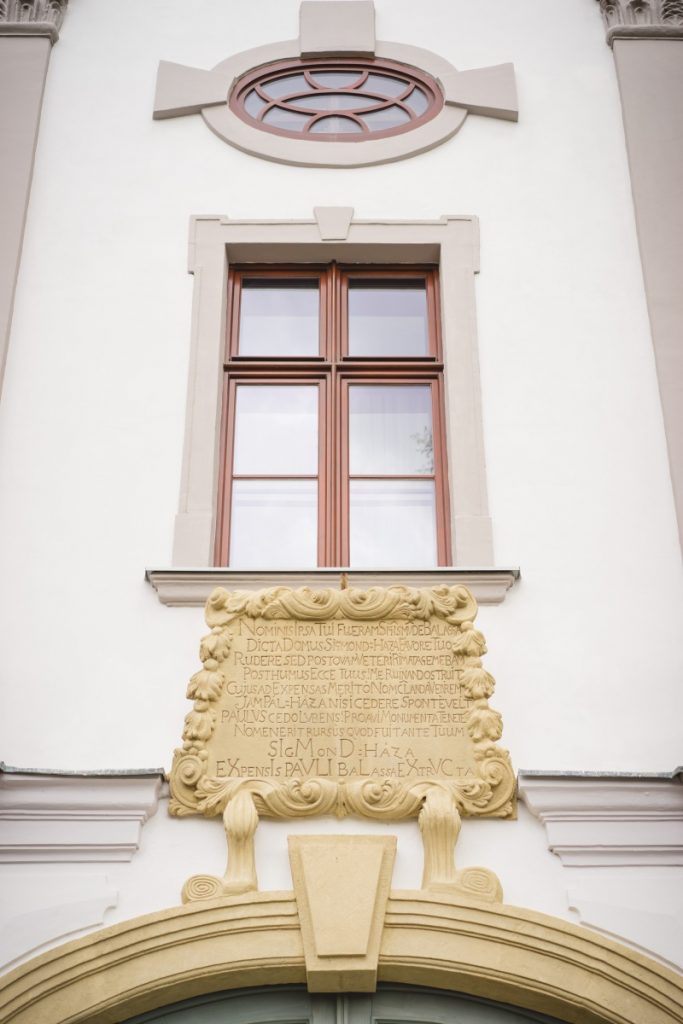
RECONSTRUCTION
A Latin chronogram, located above the main entrance to the mansion-house, accompanied by the date 1733, also stands for the period of a major reconstruction and conversion of the Renaissance manor-house to a Baroque one.
Free translation: (I), lived in this (house) bearing your name, called the house of Zigmund Balassa – Sigmond-haza of your favour, but then I (was) a ruin, and (as an) old building I groaned. After your death, I was rebuilt from the ruins
by the (one) whose name I wish to celebrate for (his) costs for the merits, If I was to (be called) Pál-haza
Pavol …as I honour the memory of my granddad. Again, called the (house) like before to bear my name, the original name Sigmond-háza. Built at the expense of Pavol Balassa.
Chronogram:
M+D+C+L+L+X+X+V+V+I+I+I= 1733
In 1721, Pavol II. Balassa was promoted by King Charles IV. to the count status due to his duties to the royal crown and the high duties he performed in the service of Empress Maria Theresa.
The reconstruction was based on the original design of the building, respecting some Renaissance elements. The building conversion involving the extension of the building turned it to a spectacular, huge two-storey Baroque building of today’s appearance. His aim was to modernize and adapt the space to the demands of that period. The arcade courtyard was complemented by a central fountain with Baroque elements. There was a hall (salla terrena) on the ground floor of the northern wing, which was originally entered on a horse. A park was gradually built around the Manor-House, which architecturally corresponded to the ground floor hall. The fragments of the original Renaissance building on the ground floor with cylindrical and jack (Prussian) vaults, built by Zigmund Balassa, have been preserved until the present, mainly in the rear part of the building. The rooms of the floor were, after the reconstruction, completed with stucco decorations, supraport paintings and mirrored ceilings. The interior was complemented by late Baroque fireplaces and stoves. Some of them were the work of the brick master Jacob Makay.
CHAPEL OF JOHN OF NEPOMUK
The result of the reconstruction was also a unique late Baroque chapel with a rococo oratory in the western wing of the Manor-House on the ground floor. It was also accessible directly from the rooms. It was built at the initiative of Count František Balassa who worked in the service of the imperial court in Vienna. The Chapel was dedicated to Saint John of Nepomuk who is depicted on the main altar painting. There are rare objects and paintings of a high historical value in the Chapel. Among them is an organ dated back to the 19th century, which is a cultural monument registered in the Monuments Fund of the Slovak Republic. It is still functional today and is used forworships and wedding ceremonies that are held in the Hotel. Other masterpieces are the two paintings of the Birth and the Sacrifice of Christ in the Church, probably by an unknown author of the Viennese artistic circle, and a large hanged painting of Ladislaus I of Hungary, a Hungarian monarch, painted by Slovak painter Jozef Božetech Klemens. This painting (originally an altar painting) comes from the Church of Ladislaus I of Hungary in Považské Podhradie (the suburb of Považská Bystrica). A post-war situation caused significant intervention in the original Chapel equipment, which brought proposals to remove altar architecture, relocate the Chapel furnishings (the Rococo pulpit, organ, stove, benches and wardrobes) in order to get a large space for political needs.
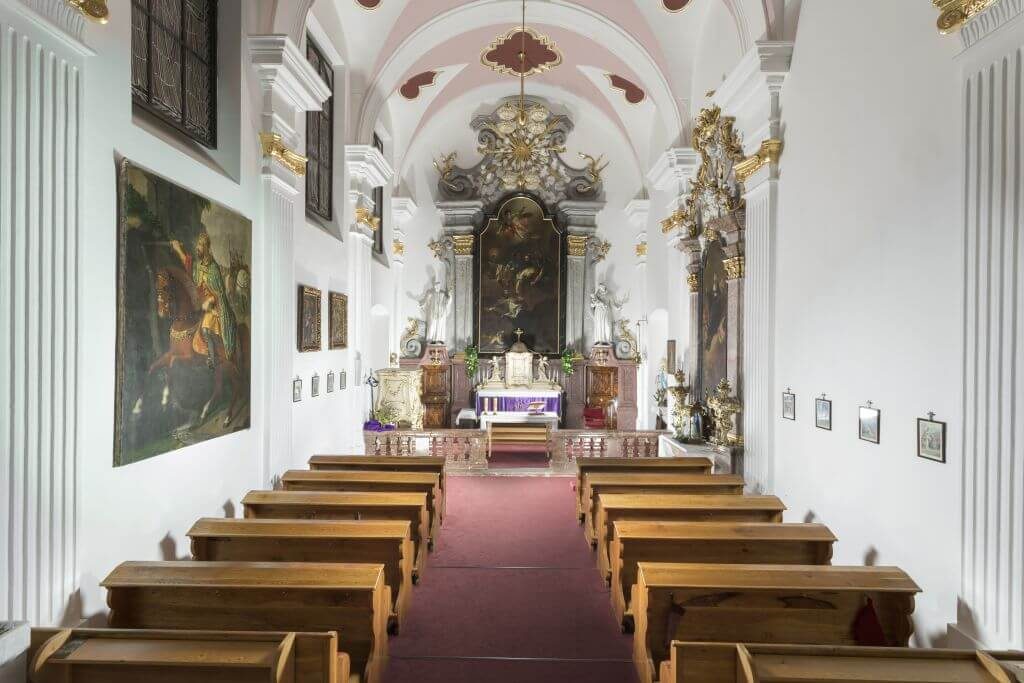

COAT OF ARMS
In the passageway to the Manor-House, just behind the entrance gate, there are niches on both sides with the sculptures of knights symbolizing their original function as guardians or carriers of the coat of arms. (Maybe they symbolized John and Rafael Podmanický, former ‚Robber Barons‘ from Považie). On the right side of the entrance underpass is a wall-mounted coat of arms with a deep relief, which was associated with Zigmund Balassa with respect to the name of the first builder of the manor-house (mansion) until recent times. Considering its right side which shows his second wife, Juliana Batthyány, who was also from a count family, the coat of arms could belong to Pavol Balassa. Probably it had been on the mansion’s facade before. The change in its location related to a change of owners of the Manor-House. On the left on the shield, there is a bison head with horns, under the mouth is a large crescent, and an asterisk between the horns. All these symbols are surrounded by a crowned dragon and embedded into the shield. Above the shield, there is a helmet with a jewel consisting of a crowned female eagle holding a sceptre in the right and a sword in the left leg. Blankets fall into the helmet on both sides of the shield. On the right side, there is the Batthyány’s coat of arms, which lacks a jewel and blankets. Compared to her husband’s coat of arms, it is disproportionately large. The shield forms an oval in which the shield sign of the Batthyány family is incorporated. The deep plastic relief forms an oval shield with a massive rocky cliff. On its right side is a cave with a lion that has a pierced neck with a sword. At the top of the cliff is a nest in which a crowned female eagle feeds three eaglets with blood from her own breast. It dates back to about 1729-1738. It was renovated in 1974-1985.
END OF THE BALASSA FAMILY IN THE MANOR-HOUSE
After the death of Pavol II. Balassa, his son Ján Balassa inherited everything. He did not have children, so everything went to his brother Francis II Balassa to whom Maria Theresa awarded the Count’s title in 1772.
The Balassasowned their estate until about the middle of the 19th century. At the time of growing capitalism in Hungary, the Orlové part of the estate was sold to the rich landowner Jozef Lord, an experienced wood merchant. In Orlové, in 1878, Lord had built a steam-powered saw mill for wood processing from the surrounding forests, employing more than twenty workers and bringing more earning opportunities to the inhabitants of Orlové. In the second half of the 19th century, the owners of the Orlové estate often changed. Princess Charlotte Mayláth, the wife of Prince of Hohenlohe-Schillingsfürst, a high senior official of the imperial court in Vienna, bought the mansion with the surrounding estate from Jozef Lord. Prince of Hohenlohe-Schillingsfürst stayed in the Orlové manor rarely because of his duties in Vienna.
In 1915, Charlotte Mayláth sold the Orlové estate together with the manor-house to Jan Kubelík, a well-known Czech composer and violin virtuoso.The unique violinist was known for his tenderness and the ease that he reached with a tightly strung bow. He played the world-famous 1715 ‚Emperor‘ Stradivarius violin. During the occupation he prepared ten concerts with 50 works of world literature with the Czech Philharmonic, which he knew by heart. He supported the Czech Philharmonic with his authority and also financially; at the beginning, by employing them as accompaniment on his English tour. His last public performance was in the native land of his forefathers in Neveklov. He died in Prague and his final resting place is in Slavin at the Vyšehrad cemetery in Prague.
In the first third of the 20th century, the Baworowski family bought the Orlové manor estate from Jan Kubelík. They were Polish nationals registered for permanent residence in Lviv, but from 1921 to 1928 they temporarily stayed in the Orlové manor estate.
THE MANOR-HOUSE DURING THE DEVELOPMENT OF ENGINEERING INDUSTRY IN THE REGION
The Manor-House became the property of Ing. Klement Ružička, the Managing Director of Zbrojovka a.s. (JSC) in Brno. He bought it from a plant that was not interested in it but had to buy it along with the remaining land that was designated for the construction of a plant. The history of the Manor-House with this owner stretches to the present. At the beginning of the 1990s, his stepdaughter, Mrs. Bohumila Horňáková (a well-known actress of the Workers‘ Theatre in Žilina), who is an heir to not only the Manor-House, but also other real estate and land in the region, brought a restitution claim to the Manor-House. However, Považské strojárne (machinery plant), which owned the Manor-House at that time, paid her for the Manor-House and the Manor-House remained in their possession.
MANOR-HOUSE IN THE 2ND HALF OF THE 20TH CENTURY
After 1945, the Manor-House came under the possession of the Czechoslovak State Forests and in June 1952, as part of the assignment continuation, it passed into the hands of Považské strojárne n. p., K. Gottwald’s Plant, which stated in a letter addressed to the Assignment Commission that they planned to use the premises as a dormitory for 200 employees. The interior of the Manor-House suffered a great deal due to the change of owner and the subsequent adaptation associated with its building conversion adapted to its use as catering premises. Partially, the demolition and construction work disrupted the integrity of the stucco decoration.
Later, after 1955, the Plant made its plan to establish a dormitory in the historical premises. Although it was owned by Považské strojárne, it began to fall into disrepair quickly because it was not given sufficient care and maintenance. Between 1961 and 1975, there were the State District Archives in the Manor-House. The rooms on the floor of the Manor-House served as warehouses, where about 1,400 archival documents were stored. Unsatisfactory conditions caused that the archives had to be moved. The general reconstruction of the building took place in 1975 as part of the categorization of cultural monuments. According to the original plans, part of the Manor-House was to serve for Považské strojárne for representation purposes and the other part was planned to house a Historical and Homeland Studies Museum with regional competence and independent specialized technical exposition of Považské strojárne. National enterprise Považské strojárne and the District National Committee Považská Bystrica became the investors of the reconstruction. The gateway of the Orlové Manor-House was solemnly opened after the general reconstruction in 1984. From then until 2004, a Homeland Studies Museum was established there.
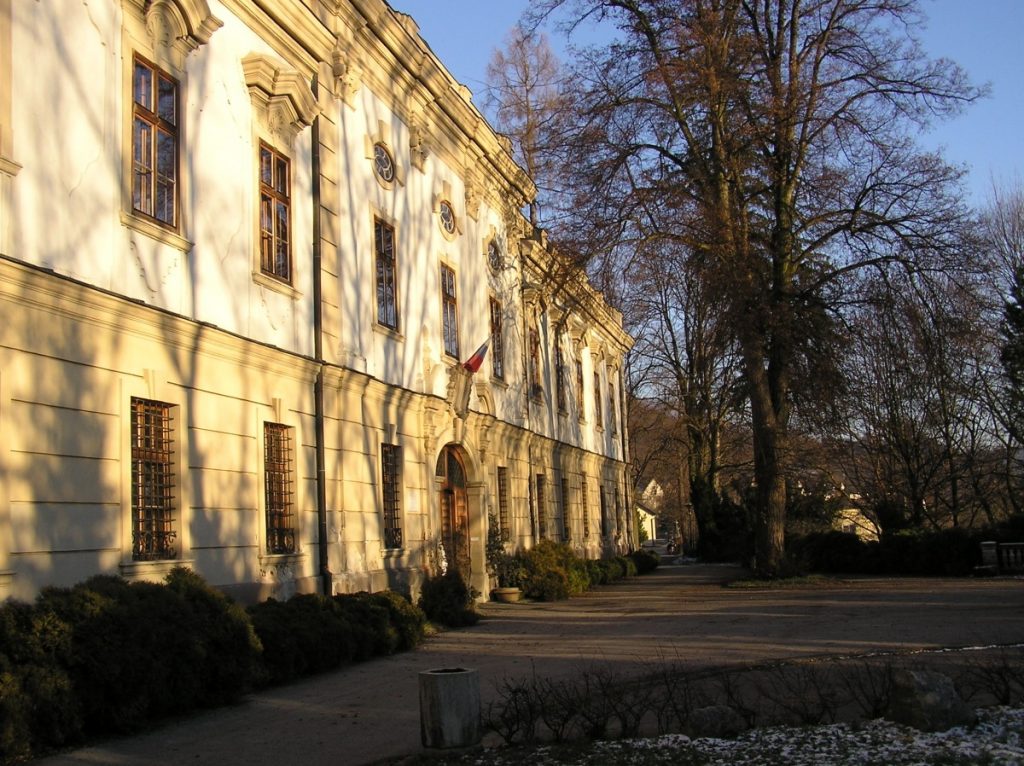
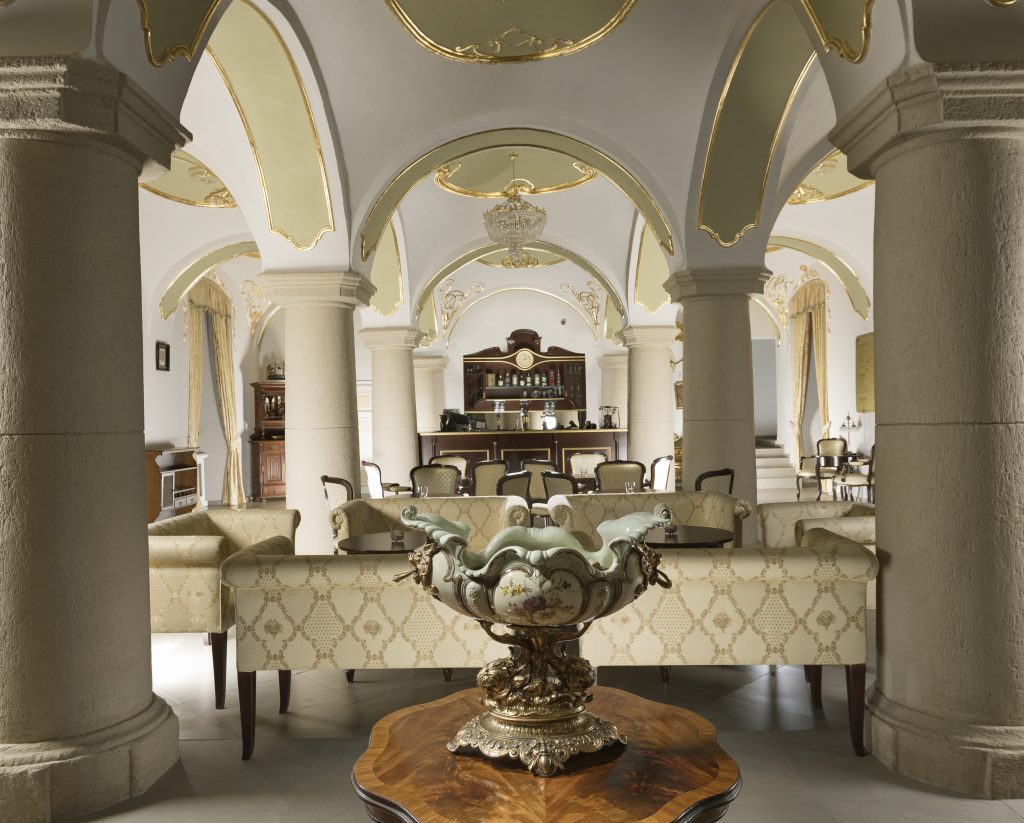
MANOR-HOUSE AT THE TURN OF THE 20TH AND 21ST CENTURY
Starting from 1993, banks, state institutions and even the President’s Office showed interest in the Manor-House. However, no sale was organized. In May 2000, when Považské strojárne went bankrupt, the Manor-House became part of the bankrupt’s estate, which was bought by Majetok, a.s. (JSC) from the trustee in 2003. A year later, the Homeland Studies Museum moved from the Manor-House to Považské Podhradie. The joint stock company Majetok, a. s. sold the Manor-House to the Bratislava based company EUROCOM & Co, s. r. o. (Ltd.), which is part of Gino Holding, engaged in construction and operation of tourist centres, restaurants and hotels in Slovakia and abroad. In 2014-2016, Gino Holding carried out extensive renovation and nowadays the Manor-House is the seat of the Hotel Gino Park Palace, which offers accommodation with a total capacity of 116 beds, a café, a lobby bar with a summer terrace, a restaurant with author’s recipes, lounges, a wellness and fitness centre, a chapel, a wedding gazebo, and a historical park. Hotel services and facilities are suitable for organizing corporate events, events, training, family celebrations and turn-key weddings.
